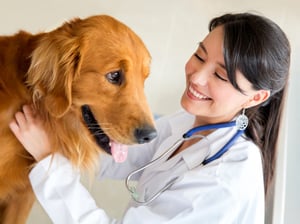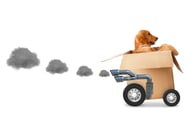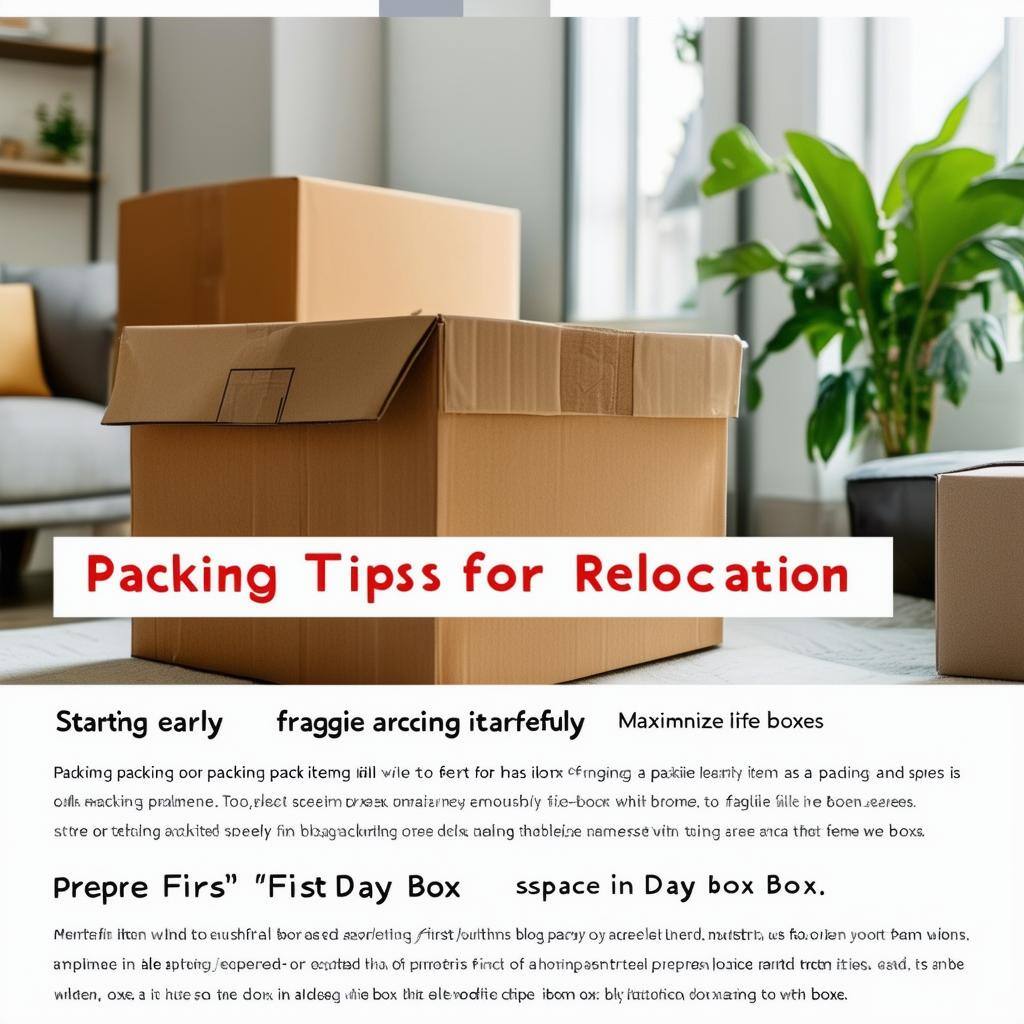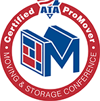Moving to a new house implies reorganization, changes, unexpected situations, hours of driving/flying, packing and unpacking, making new friends... a series of challenges that are stressful and overwhelming. Us humans understand what's happening and we still have some trouble going though the whole process smoothly and stress-free. Imagine what it's like for your dog, who has no clue of what's going on (no matter how much you've talked about it with him!).
To our beloved fur babies, it's all confusing and new. But don't worry! You can all survive the move well. If you start preparing yourselves ahead of time, the process can be easier and less stressful for everyone, both humans and pets.
A short survival guide for moving with a dog...
and surviving it alive and well.
1. Before moving
- Get your dog an ID tag with the new address
- Make sure you
have all of your
pet's vaccination
records

- Look for a vet in your new area/neighborhood. Save his contact info and keep it at hand
- Find out your new neighborhood's regulation on pets. Laws and regulations may vary from one place to another: do you need a new license? what about the leash? which breeds are allowed in your future neighborhood?
- Be as calm as possible. You know this well by now, your dog gets your mood, so try staying as calm as possible so you actually set the example. If you are calm, your pet will be too.
- Make it easy for them: Before you move to the new place, adapt to any new routine he might have. If your dog will have to be more quiet in his new home - for example you now live in a house and will move into an apartment - start teaching him now, at your current home.
Don't wait until you get to your new place to change more things!
Does he now have a pet door but won't have one anymore? Start training him around it (peeing schedules, leash before going out...). If it's possible, walk him around the new neighborhood.

- Pack slowly. Leave boxes around. You don't want to pack it all in a day and leave him confused about what the heck is going on.
Take your time, pack a little, leave the box around and then spend some time with him. Pack some more the next day and so on. It'll make the process easier for him. The idea is to let him feel it's all stable.
- Introduce the dog's crate to your furry buddy. Leave it around, sit close to it and let him go in and stay there for a while. You can encourage him walking into the crate by placing some toys or treats inside of it. Let it be a nice, resting space.
- If you are driving to your new home and used a dog's car seat belt, introduce the harness he will be wearing, put it on every now and then. Let him become as used to it as possible.
2. "D-Day". Moving Day
- If you can, send your dog away for the packing day - the day the moving van arrives. There will be people coming in and out, lots of unfamiliar voices and noises, things literally disappearing from the house (from your dog's point of view) and open doors at all times. So the best you can do is either send him to doggy care or secure him in a room (put some of his things there).

- Driving of flying? It all depends on the distance. If it's not too far away, maybe you should consider driving with your dog. If it's not possible then yes, take the plane. A few considerations on each:
- By
car.
Consider
stopping a
little more
often so your
dog can stretch
a little and
avoid accidents
in the car.
Bring toys,
towels, food and
water.
Have everything
your dog might
need on hand.l;
If he tends to
get car-sick,
talk to the vet
about it and try
to feed him
lightly. Dog in
the crate
or with a
dog's seat
belt
is a must.

- By plane. Check out the airline's regulations beforehand: Some airlines allow bringing small pets under their owner's seat if they are in a crate and extra fees are paid. Others won't. Pets that go in the cargo area of the plane must not be medicated and airlines recommend you travel during spring or fall, since they won't fly your pet during very hot or cold weather. Ask also about the kennel's regulations.
3. At your new home

- Keep in mind that although you are finally relieved, your dog's adaptation period is only beginning. Be patient. Don't try to introduce routine changes just yet, try to keep it as similar as it was before (schedules, location of his food and things...)
- Set your dog's area first so he has a nice and comfy place to relax while you unpack the rest.
- Take the time to be with your dog and go for walks to explore the area. Make his new home and neighborhood fun for him.
- Take your time cleaning your stuff, let the old-familiar smells stay around for a little longer.
Bottom line: plan ahead, adapt the move to your dog's needs and, most of all, be patient. Once you have finally finished moving, it'll all be new to him. You will both need some adaptation time.
Remember - be patient and make it fun? He will finally come around and settle in.

Don't forget that you can always ask for a professional's help. Ask your moving company about it, let someone give you a hand. Moving can be as stressful or as smooth as you decide it to be, find those people who will make it all easier for you.
Contact Victory Van, we will be happy to help with this and with any other moving-related situation.













